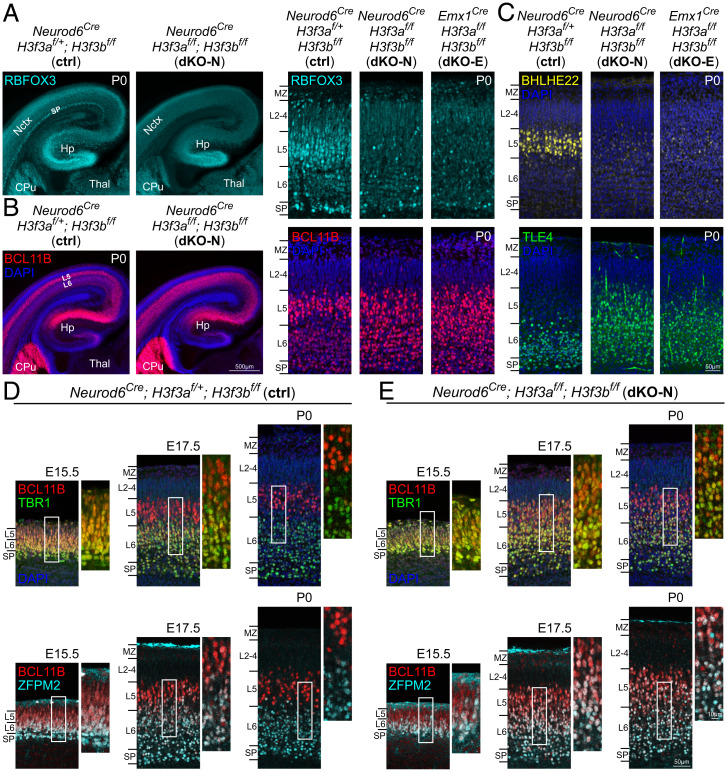Fig. 4.
Disrupted establishment of layer-dependent neuronal identities following H3f3a and H3f3b codeletion. (A) In the P0 control cortex, RBFOX3 (NEUN, cyan) immunostaining was present in all cortical layers and intensely labeled L5 and SP neurons. In dKO-N and dKO-E cortex, RBFOX3 expression was decreased and intense staining of L5 and SP neurons was absent. (B) In P0 control, BCL11B (CTIP2, red) showed intense staining in L5 neurons and moderate staining in L6 neurons. In dKO-N and dKO-E, differential BCL11B staining between L5 and L6 was lost. (C) In P0 control, BHLHE22 (yellow) immunostaining intensely labeled L5 neurons, and TLE4 (green) immunostaining was restricted to L6 neurons. In dKO-N and dKO-E, intense L5 staining of BHLHE22 was lost, and TLE4 staining was aberrantly present in L5. (D and E) Postmitotic refinement of deep-layer neuronal identities was analyzed in E15.5, E17.5, and P0 cortex by layer marker costaining. In control (D), TBR1 (green)- or ZFPM2 (FOG2, cyan)-labeled L6 neurons abundantly coexpressed BCL11B (red) at E15.5. TBR1- or ZFPM2-labeled L6 neurons have begun to down-regulate BCL11B at E17.5 and largely did not express high levels of BCL11B by P0. In dKO-N (E), BCL11B was coexpressed with TBR1 or ZFPM2 at E15.5 in a manner similar to control. Abundant marker coexpression, however, persisted at E17.5 and P0. Deep-layer neurons maintained a developmentally immature, mixed L5/L6 molecular identity in dKO-N until P0. Hp, hippocampus; Thal, thalamus.

